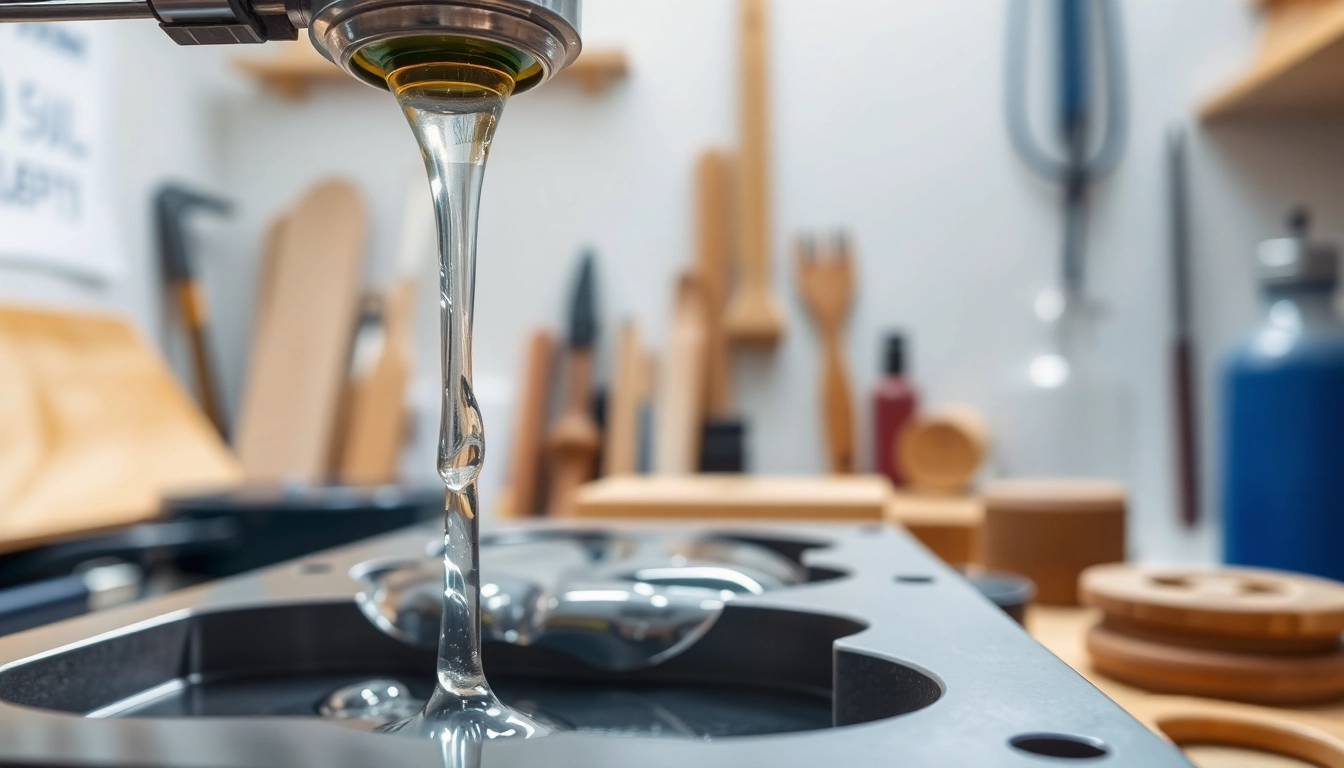Understanding Pipe Flanges
Definition and Importance of Pipe Flanges
Pipe flanges are critical components used in piping systems to create connections between pipes, valves, pumps, and other equipment. These mechanical fittings serve as the backbone of fluid and gas conveyance systems, enabling the flow of substances under various pressures and temperatures. The significance of pipe flanges cannot be overstated; they ensure leak-proof seals and maintain the structural integrity of the system, allowing for safe and efficient operation. Moreover, their modular nature facilitates the ease of disassembly and reassembly, crucial for maintenance and repairs. As industries strive for reliability and efficiency, selecting the right pipe flanges becomes paramount.
Common Types of Pipe Flanges
There are several types of pipe flanges, each designed for specific applications and operating conditions. The most commonly used types include:
- Weld Neck Flanges: These flanges have a tapered neck that provides strength and stability, making them ideal for high-pressure applications.
- Slip-On Flanges: These flanges slip over the pipe and are welded both inside and outside, offering a cost-effective solution with easier installation.
- Blind Flanges: Used to seal the end of a piping system, blind flanges prevent flow and are commonly utilized in maintenance applications.
- Socket Weld Flanges: These flanges are designed for applications with small diameters and high-pressure systems, offering added strength through the socket connection.
- Lap Joint Flanges: These flanges consist of a two-piece design and are used in conjunction with a lap joint stub end, allowing for easy alignment and disassembly.
- Threaded Flanges: With internal threads, these flanges can be easily attached to the pipe without welding, making them suitable for situations where welding may not be feasible.
Key Specifications and Standards
Pipe flanges must adhere to industry specifications and standards to ensure compatibility and performance. Common standards include:
- ASME B16.5: Covers the standards for pipe flanges and flanged fittings, including dimensions, materials, and pressure ratings.
- ASME B16.47: This specification provides guidelines for larger diameter flanges, crucial for oil and gas applications.
- API 6A: This standard is specifically designed for flanges used in the oil and gas industry, emphasizing the need for reliability under extreme conditions.
Understanding these specifications helps engineers and technicians select appropriate flanges that meet their project’s requirements while ensuring safety and compliance.
Choosing the Right Pipe Flange
Factors to Consider in Selection
Selecting the right pipe flange involves evaluating several essential factors. Key considerations include:
- Material: The choice of material affects the flange’s resistance to corrosion, temperature, and pressure. Common materials include carbon steel, stainless steel, and alloy steel.
- Pressure Rating: Flanges come with different pressure ratings, denoted by classes (e.g., Class 150, Class 300), which dictate their ability to withstand internal pressures.
- Size and Dimensions: The size of the flange must correlate with the diameter of the pipe, and adherence to dimensional standards ensures compatibility with other components.
- Connection Type: Depending on the installation method, the selection might favor weld neck, slip-on, or threaded options based on the specific requirements of the system.
Comparing Material Options for Pipe Flanges
The material of the pipe flange plays a crucial role in its performance and suitability for an application. Here’s a comparative look at common materials:
- Carbon Steel: Known for its strength and durability, carbon steel is often used in general piping applications but requires protective coatings to combat corrosion.
- Stainless Steel: This material offers excellent corrosion resistance and is favored in environments where hygiene and cleanliness are paramount, such as in food processing and pharmaceuticals.
- Alloy Steel: Alloy steels are tailored with other elements to enhance specific properties, such as toughness and wear resistance, making them ideal for heavy-duty applications.
When choosing a material, factors like the operating environment, fluid characteristics, and temperature ranges must be taken into account.
Flange Size and Pressure Ratings
Flange size and pressure ratings are paramount in ensuring that the flange can handle the operational demands of the system. The size of the flange should match the nominal pipe size (NPS), with flanges available in various size standardizations. Pressure ratings are categorized based on ANSI specifications, denoting the maximum pressure a flange can handle under specific temperature conditions. It is crucial to refer to the appropriate tables and industry guidelines to select flanges that not only meet current operating conditions but can also accommodate future demands.
Pipe Flange Applications
Industries Utilizing Pipe Flanges
Pipe flanges find widespread application across multiple industries due to their versatility. Key industries include:
- Oil and Gas: Flanges are critical for safely transporting crude oil and natural gas through pipelines.
- Chemical Processing: Pipe flanges handle various chemicals, requiring materials that can resist corrosion and withstand high pressure.
- Water and Wastewater Treatment: Flanges are essential in systems designed for water distribution and sewage management.
- Pharmaceuticals: High standards of cleanliness and compliance necessitate the use of corrosion-resistant stainless steel flanges.
- Power Generation: Flanges play a pivotal role in steam, gas, and nuclear power plants, where high temperatures and pressures are the norm.
Typical Use Cases for Various Flanges
Understanding typical applications for various types of flanges allows for informed decision-making. Some use cases include:
- Weld Neck Flanges: Ideal for severe service applications, such as offshore oil platforms, where stability and strength are crucial.
- Slip-On Flanges: Commonly used in applications that require less stringent requirements, like drainage systems or low-pressure piping.
- Blind Flanges: Frequently utilized in hydro testing applications where end capping is needed to seal systems during testing.
- Socket Weld Flanges: Typically used in small diameter piping for high-pressure systems, especially within oil refineries.
Case Studies: Successful Implementations
Examining real-world applications of pipe flanges can provide valuable insights into their effectiveness. For example, a large oil refinery implemented ASME B16.5 compliant weld neck flanges in their crude distillation process. The result was improved safety and reduced leaks during high-pressure operations. Another case involved the pharmaceutical sector, where stainless steel slip-on flanges were employed to meet stringent cleanliness standards, significantly enhancing operational efficiency in the production line.
Installation and Maintenance of Pipe Flanges
Best Practices for Installing Pipe Flanges
The installation of pipe flanges demands precision and adherence to best practices to ensure a leak-proof and secure connection. Key installation steps include:
- Surface Preparation: Ensure that the flange faces are clean and free from any debris or corrosion.
- Alignment: Flanges must be properly aligned with the pipes to prevent undue stress that can lead to leaks or failures.
- Tightening: Follow a specific tightening pattern and torque specifications to evenly distribute pressure across the flange and achieve optimal sealing.
Common Installation Mistakes to Avoid
Even experienced technicians may encounter pitfalls during flange installation. Common mistakes include:
- Forgetting to check for corrosion or surface damage before installation, which can compromise the seal.
- Over-tightening bolts, leading to flange warping or gasket failure.
- Not using the correct type of gasket for the specific application, which can cause leaks.
Avoiding these pitfalls can greatly improve the longevity and reliability of the piping system.
Maintenance Tips to Ensure Longevity
Regular maintenance is crucial to prolong the life of pipe flanges. Recommendations include:
- Routine inspections to check for signs of wear, corrosion, or leaks.
- Cleaning flange surfaces periodically to prevent accumulation of deposits that can affect sealing.
- Monitoring operational pressure and temperature to ensure they remain within specified limits.
Implementing a structured maintenance plan can help identify issues early and extend the operational lifespan of pipeline systems.
Future Trends in Pipe Flanges
Emerging Technologies Influencing Pipe Flanges
As technology advances, new innovations in the design and manufacturing of pipe flanges are emerging. Digital manufacturing techniques like 3D printing are gaining traction, offering customization and reducing material waste. Furthermore, the integration of smart technologies may enable real-time monitoring of flange conditions, allowing for predictive maintenance and improved safety.
Sustainability in Flange Manufacturing
With increasing focus on sustainability, manufacturers are exploring ways to reduce their environmental impact. This includes sourcing materials from recycled sources and implementing energy-efficient production processes. Additionally, the design of flanges is evolving to be more eco-friendly, accommodating the growing demand for sustainable industrial practices.
Predictions for the Flange Market
The pipe flange market is expected to experience significant growth in response to global infrastructure needs and energy demands. Analysts predict a surge in demand for high-performance flanges in emerging economies, driven by industrialization and urbanization. Companies that focus on innovation, quality, and sustainability will be well-positioned to capitalize on these trends.



